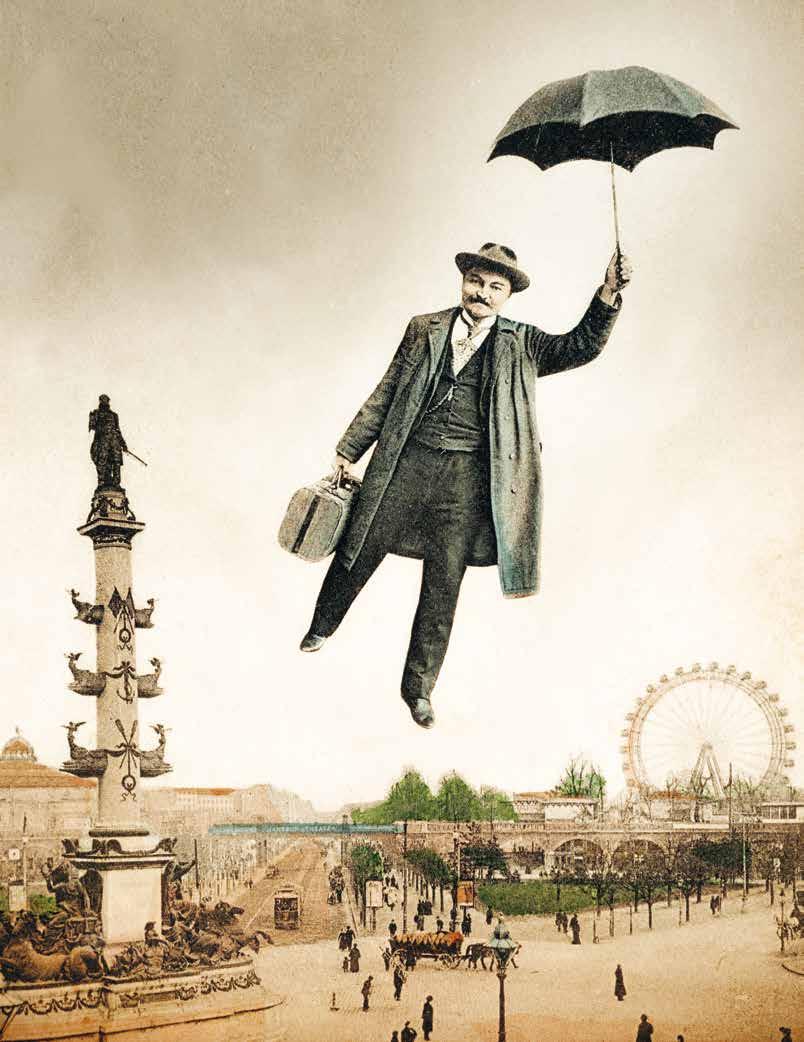

PRATER VIENNA
The Vienna Prater
The Vienna Prater A Place for Everyone
Birkhäuser Basel
Werner Michael Schwarz Susanne Winkler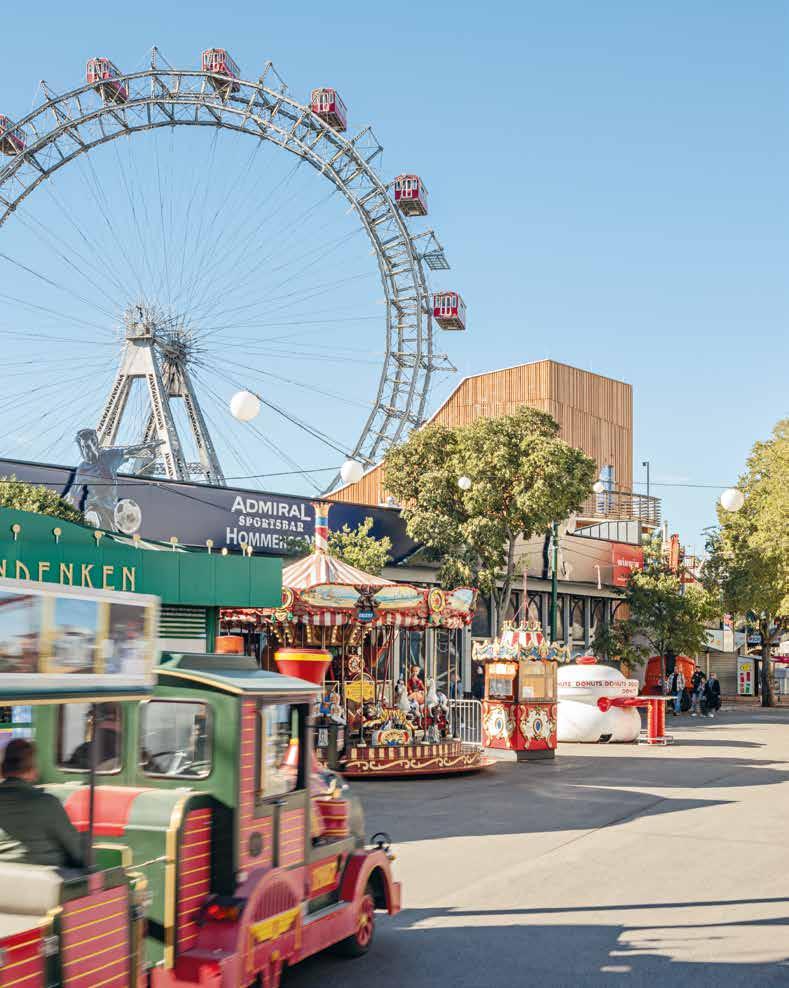 Prater Museum with the Riesenrad Ferris wheel, 2023
Photo: Hertha Hurnaus
Prater Museum with the Riesenrad Ferris wheel, 2023
Photo: Hertha Hurnaus

 “Super Roller Coaster” at the Prater, 2013
Photo: Ralf Roletschek
“Super Roller Coaster” at the Prater, 2013
Photo: Ralf Roletschek


Joseph Daniel von Huber
(attributed): Plan of the Prater (detail), 1782 colored copper engraving, Wien Museum, inv. no. 169784

What Is the Prater?
“Few of the world’s capitals have anything quite like our Prater. Is it a park? ‘No.’ Is it a meadow? ‘No.’ Is it a garden? ‘No.’ Woodlands? ‘No.’ Pleasure grounds? ‘No.’ What is it then? ‘All of these combined.’”
This variety of forms and uses, as described by the writer Adalbert Stifter in 1844, still applies today to the 1,500 or so acres that lie between the Danube and the Danube Canal. The Vienna Prater is many things a park for pleasure and recreation, a natural landscape, an open space, and a sports ground.
It was opened in 1766 by Emperor Joseph II, marking a revolutionary step for Vienna and the beginning of a new era. For centuries, the imperial hunting grounds had been closed to the public. But from this point on they were open to “everyman,” in other words, to all for strolling through meadows and along avenues, for eating and drinking, for dancing and amusements in the many taverns that soon sprang up, for music and theater on simple wooden stages and in elegant coffee houses. Emperor Joseph II took this step with a view to making profound changes in society. In the spirit of the Enlightenment, the Prater functioned as a social testing ground, one where the traditional hierarchy of class and religion was to be overcome. For the first time, “leisure” was recognized as a distinct period of time set aside for individual recreation and as separate from the prescriptions of religious feast days. Notions of utility also played
Prater Panorama 2024 by
Olaf Osten (detail)Covering an area of almost 1,000 ft 2, the Prater Panorama by artist Olaf Osten tells the nearly 260-year history of leisure and entertainment in the Prater.
an important role, with the belief that leisure would raise productivity and make the state more competitive among the major European powers. Under the emperor’s plans, the Prater would stimulate encounters between the different social classes, and in particular introduce the aristocracy to bourgeois thought.
For more than two centuries, the Prater was Vienna’s most important location for innovation and experimentation a laboratory, even. It was here that the public first learned about almost all new technological, social, and cultural developments: from optical equipment to spectacular feats of engineering such as the construction of the Rotunda and the Riesenrad Ferris wheel, from hot-air balloon flights to the film A Trip to the Moon, from the inner workings of the human body in anatomical museums to modern sports such as football, cycling, and tennis, from high society’s flower parade to the first workers’ May Day march.
For most Viennese, the Prater was a window to the wider world. Panoramas, dioramas, room tours, and grotto trains featured images of foreign cities and countries. Zoos, menageries, and circuses brought wild and exotic animals to Vienna.
The Prater was a place where people grappled with the big questions of modern life in ways that were enjoyable, instructive, spectacular, humorous, and transformative. These were questions about ideal forms of human society, attitudes to nature, animals, technology, and science, about political power and how the world is organized, and about notions of beauty and the good life.
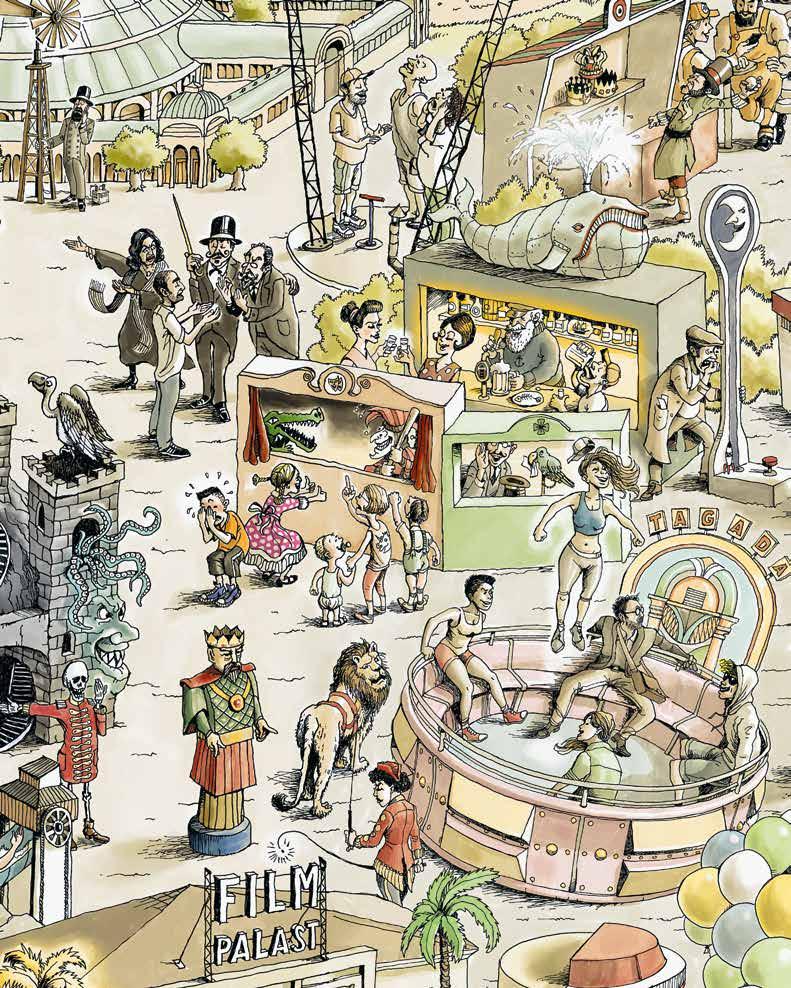
Why “Wurstelprater”?
Soon after the imperial hunting grounds were opened to the public, an amusement district emerged in the area of the Prater closest to the city. By the first half of the 19th century it had become known as the “Wurstelprater,” and it is still there today. The name comes from the coarse and comical figure of Hanswurst Mr. Punch in English. In Vienna, he became the star of the many puppet theaters (“Wursteltheater”) in the Prater. Mr. Punch’s companions and antagonists included the Crocodile, the Princess, the Magician, the Grandmother, the Police Constable, and the Burglar. He could be humorous and questioning, but also brutal. It was only in the 20th century that the character became a firm favorite with children.
With the huge growth of cities in the 18th century, royal hunting grounds and gardens across Europe in London, Berlin, Paris, and Vienna were opened to the general public for recreational purposes. Taverns, coffee houses, and refreshment kiosks followed, as well as amusements and attrac-
tions such as merry-go-rounds, swings, skittle alleys, circuses, menageries, and panoramas.
These modern amusement parks reached their heyday around 1900. The new industrialized world of work and modern urban life, with their harsh conditions and merciless discipline, prompted people to seek out places that provided a distraction from the daily routine and promised instant happiness. Mechanical attractions, often from the USA, such as Ferris wheels and roller coasters offered new types of bodily experience and manufactured sensations.
Following World War II, growing prosperity in Western countries— cars, televisions, travel spelled a crisis for these amusement parks around the world.
Prater Panorama 2024 by Olaf Osten (detail)
In 1883, engineer Josef Friedländer (top left) exhibited the world’s first wind turbine at the International Electrical Exhibition. Architects Zaha Hadid (Vienna University of Economics and Business), Carl von Hasenauer (1873 World’s Fair), Otto Wagner (liked to celebrate in the Prater), and Michael Wallraff (Prater Museum) are deep in conversation. At Barbara Fux’s famous puppet theater, Mr. Punch is about to whack the naughty Crocodile. The whale on the roof of the tavern of the same name now lives in the Wien Museum at Karlsplatz. Looking scared on the Tagada fairground ride is actor and director Josef Hader, who shot the film Wild Mouse in the Prater in 2017. Animal tamer Miss Senide, who grew up in the Prater and came to fame in the 19th century, is taking her favorite lion for a walk.
But in the Vienna Prater, time moved at a different pace. Longer than elsewhere, the traditional amusements and shows, the simple taverns and beer gardens, and the venues offering quality artistic and musical entertainment held their own amidst the new technologies. Today, almost no other amusement park is as deeply rooted in a city’s identity as the Wurstelprater in Vienna.

Crocodile, puppet from “Kasperltheater bei der Walfischgrottenbahn,” ca. 1890 Wien Museum, inv. no. 125356/2
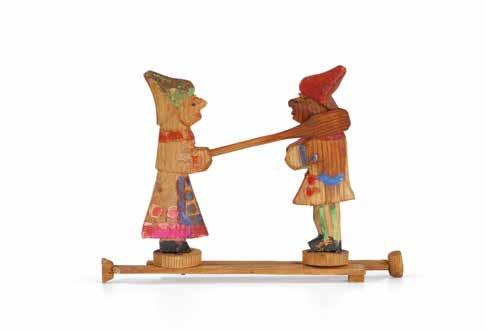

Punching dummy owned by the painter Egon Schiele, 1890s Wood, Wien Museum, inv. no. 142466
Punch and Judy show owned by the painter Egon Schiele, 1890s Wood, Wien Museum, inv. no. 142780
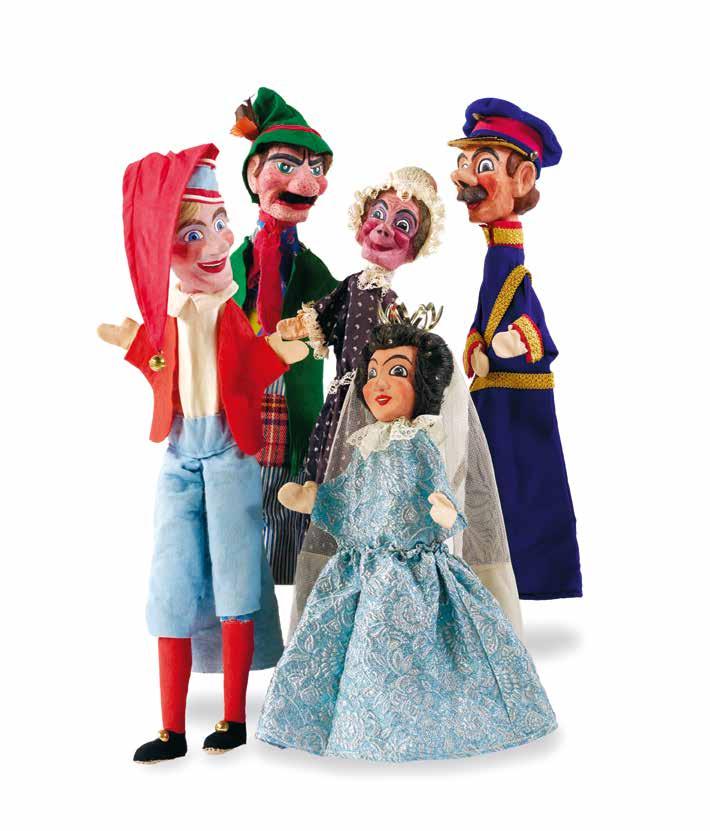
Gerd and Lisl Hoss: Puppets (Mr. Punch, Burglar, Grandmother, Princess, and Police Constable) from the Punch and Judy Theater “Der sprechende Wiener Kasperl,” ca. 1948 Wien Museum, inv. no. 305696, 305704, 305699, 306701, 305706


Circus de Bach or Circus Gymnasticus, ca. 1812
c olored copper engraving, Verlag a rtaria & c o, Wien Museum, inv. no. 105584
Circuses around 1800 mainly featured displays of riding skills. In 1808, trick rider Christoph de Bach, who was born in present-day Latvia, commissioned the Circus gymnasticus, a round, wooden building in the Prater. It had space for 3,000 spectators and was designed by renowned Viennese architect Joseph Kornhäusel.
Trick rider in the Circus de Bach or Circus Gymnasticus, ca. 1818 Woodcut, Wien Museum, inv. no. 120697
Jakob Alt: Panorama on the Hauptallee, 1815
Watercolor, Wien Museum, inv. no. 15167
Starting around 1800, panoramas began to be shown in specially built round structures made of wood. Invented in England, they afforded spectacularly realistic views of cities and landscapes along with depictions of historic events. The panorama building on the Hauptallee was created in 1801. Its proprietor, the Englishman William Barton, presented cityscapes of London, Vienna, Prague, Paris, and St. Petersburg. Panoramas were part of a new culture of seeing the world. Other modern technologies did the same, including dioramas, room tours, and later, movies.
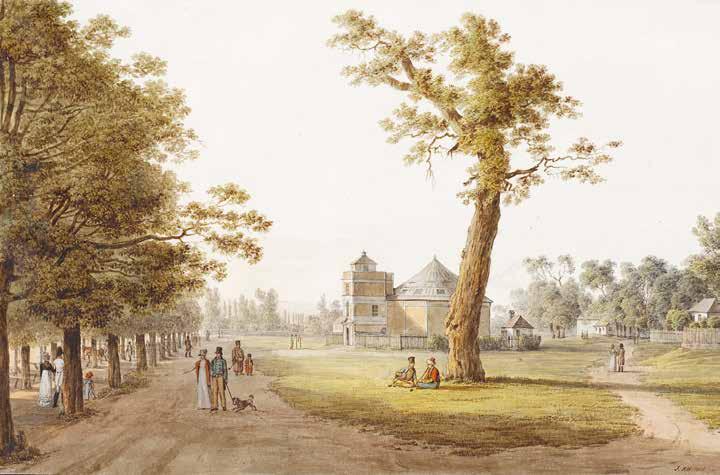

Body and Desire
The human body has formed part of the history of the Prater in a variety of ways. There have been ideal bodies, seemingly abnormal bodies, fantastical bodies, high performance bodies, and foreign bodies. Starting in the 19th century, anatomical museums with their wax specimens provided a way of seeing inside a person, of looking at the naked or diseased body. For the first time, public sex education was taking place outside medical schools and was regarded with suspicion by the Catholic Church.
People with disabilities or physical anomalies were put on show as fairground attractions. For them, the Prater was an ambivalent place. They were brutally exposed to public curiosity, but could also find shelter, community, and a livelihood here. In particularly drastic cases, people were put on display in preserved form after their death. This happened to Julia Pastrana (1834–1860), who had hypertrichosis (excessive hair growth). Nikolaj Kobelkoff (1851–1933), on the other hand, who was born without arms or legs, became a successful businessman and established a Prater dynasty, which still exists today.
Prater Panorama 2024 by Olaf Osten (detail)
Until 1945, part of the Wurstelprater lay to the left of Ausstellungsstrasse in the Venediger Au park. Famous attractions were found here: Präuscher’s Panopticum and Anatomical Museum, Kratky-Bashik’s magic theater, and Karl Pretscher’s grotto train and fairground photo studio, where souvenir photos were quick and cheap, and where photography became a mass medium. At the studio are four famous Viennese writers who, around 1900, were writing stories set in the Prater: Stefan Zweig, Arthur Schnitzler (standing), Peter Altenberg, and Hugo von Hofmannsthal (seated).
People from the European colonies, from Africa and Asia, were brought to Vienna to be put on show. They were exposed to sexist and racist violence. In the Rotunda, a huge round building, Hamburg animal trainer Carl Hagenbeck put on these kinds of presentations and preached Europe’s technological superiority. Around 1900, the “Wiener Thiergarten am Schüttel” zoo featured African “villages,” where members of the public could watch seemingly authentic presentations of daily life in places a long way from European “civilization.” Virtually round the clock, the “villagers”— women, children, and men were exposed to the intrusive gaze of the visitors, and subjected to a feverish interest in their bodies.
The Prater was the place where the limits and capabilities of the human body were put to the test, whether in feats of artistry, as tightrope walkers and trapeze artists, or as fire eaters and sword swallowers.
With their “strong men” and some “strong women,” along with boxing, wrestling, and weightlifting, the Prater’s venues popularized a new, athleticized physical ideal. Modern mass sport also took its first steps here, in the form of running, cycling, athletics, soccer, and tennis.
Many attractions continue to trade on extreme bodily experiences on vertigo, shock, and panic. They provide psychological thrills and bodily excesses of a kind seldom permitted elsewhere in modern urban life.
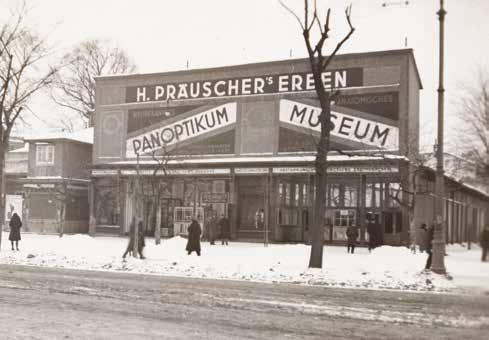
Facade of “H. Präuscher’s heirs” on Exhibition street, “Panopticum” on the left, “Anatomical Museum” on the right, 1933
Photo: unknown, Wien Museum, inv. no. HP 16/140/21
Male torso with open back and intestines, ca. 1900 Wax, Wien Museum, inv. no. 169956/3
The wax figure was originally made for Präuscher’s Panopticum and Anatomical Museum, which set up shop in 1871 on Ausstellungsstrasse in Vienna’s Prater. Prior to this, Hermann Präuscher, who came from a family of showpeople, had toured Europe with his Anatomical Museum. Museums of this kind were popular attractions from the middle of the 19th century. They displayed anatomical and pathological specimens (created from real human parts or wax) and, following in the tradition of the medical collection, made the body and its diseases known to a wide audience for the first time. This often brought it into conflict with the Catholic Church.
In addition to the museum, a panopticon featured wax figures of famous people as well as scenes and events from history. This included crowned heads of state, sparring gladiators, the participants of Austria’s 1872 polar expedition, figures from mythology, legends, and fairy tales, and famous criminals. What Präuscher offered was therefore part enlightenment, part horror, and part erotic thrill.
Präuscher’s Panopticum and Anatomical Museum fell victim to the Prater fire of 1945. Only a few figures were saved. In the 1990s, some went on display as part of a Sex Museum in the Prater.
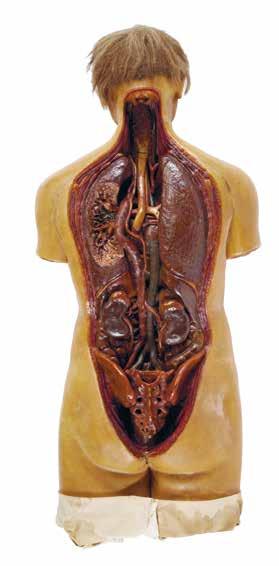
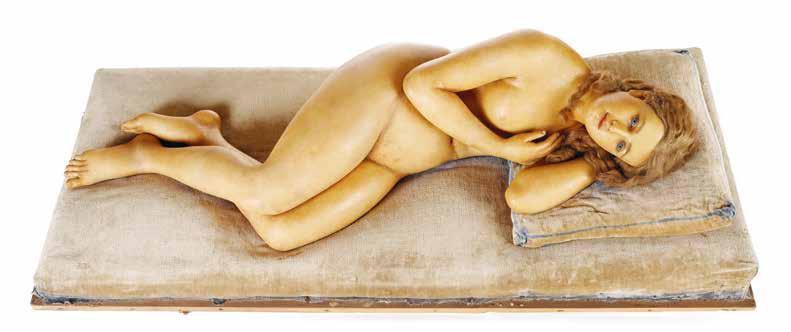
“Resting girl” from “Präuscher’s Panopticum and Anatomical Museum,” ca. 1900 Wax, Wien Museum, inv. no. 169956/2
“Weeping Cupid” from “Präuscher’s Panopticum and Anatomical Museum,” ca. 1900 Wax, Wien Museum, inv. no. 169956/1 Cupid, the personification of love, weeps over a broken arrow, having missed a heart he was aiming for.
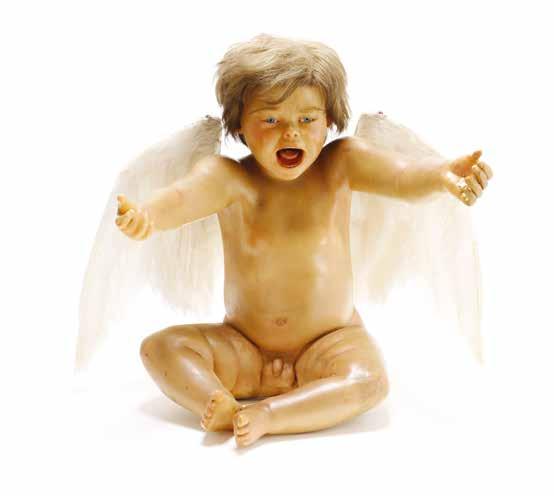
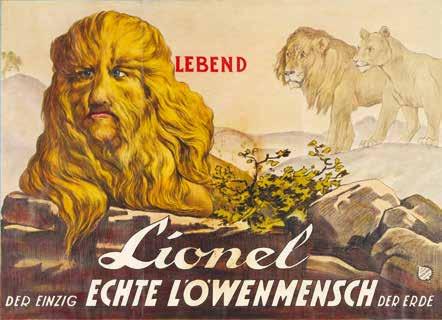
Poster “Lionel the Only Real Lion Man on Earth,” ca. 1910 a dolph Friedländer l ithographic i nstitute, Wien Museum, inv. no. 174769
Born in Russia (now Poland), Stephan Bibrowsky (1890 – 1932 / 34) had hypertrichosis and was exhibited as a “lion man” or “hair man” as a child. He lived in Vienna from 1908 to about 1910. For people with physical anomalies, places like the Prater were ambivalent. Here they were often brutally exposed to the public’s curiosity, but they could also find shelter, community, and a livelihood. In particularly drastic cases, people were put on display in preserved form even after their death. This happened to Julia Pastrana (1834 – 1860), who also had hypertrichosis.
Feigl’s “Global Show of Abnormalities,” ca. 1910
Photo: unknown, Vienna Museum, inv. no. 16/89/8
At Jakob Feigl’s attraction, over the decades people with special physical characteristics were put on display. Some conditions were congenital while others were acquired features, such as tattoos. And much was simply invented, trading on the public’s thirst for horror.


221990/78
Ruth Sylvia, born in 1886 into a Viennese family of performers, started to display her full-body tattoos in the 1900s. According to newspaper reports, she had been tattooed by a Japanese woman in London.
The athlete “Wary” in Roman clothing at Circus Zentral in the Prater, 1923/24
Photo: unknown, Wien Museum, inv. no. 172921/22

